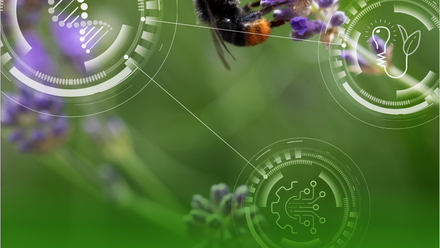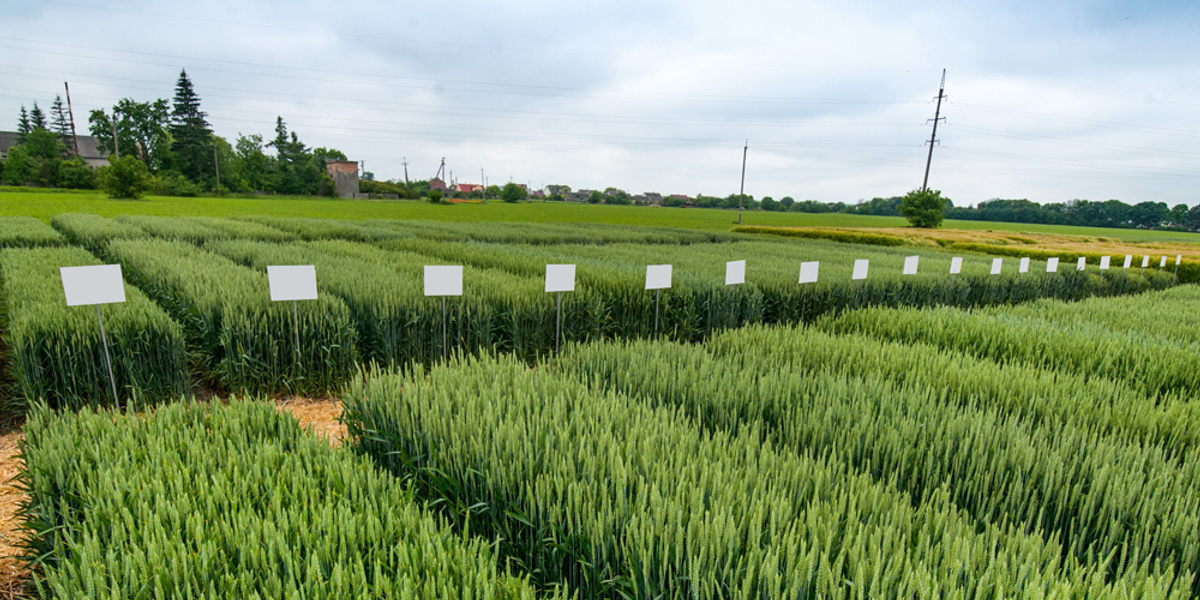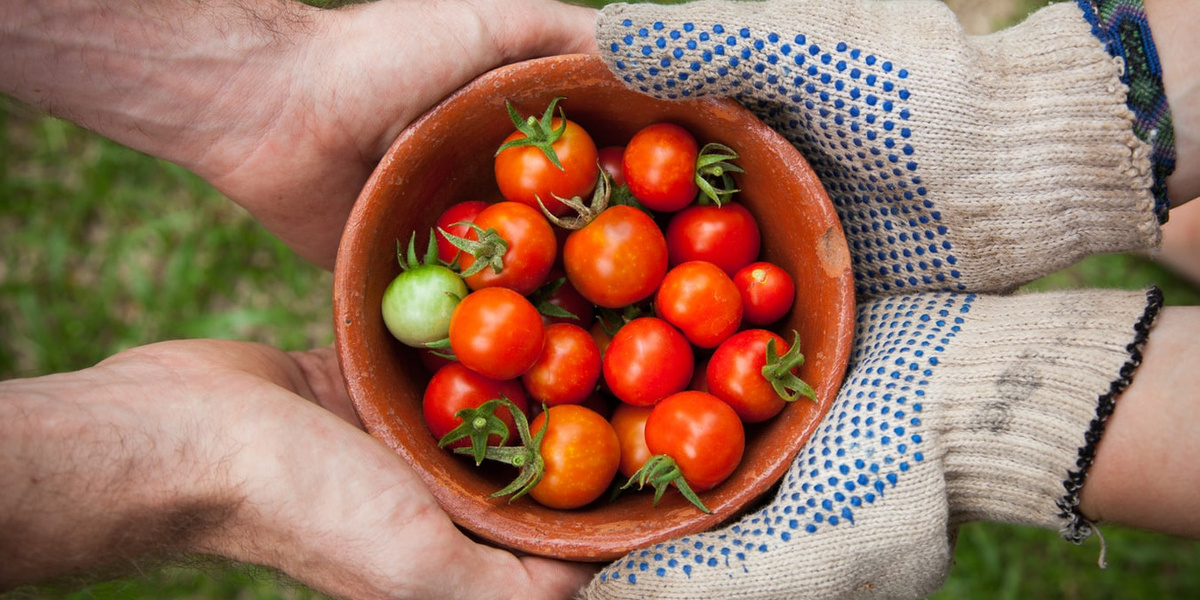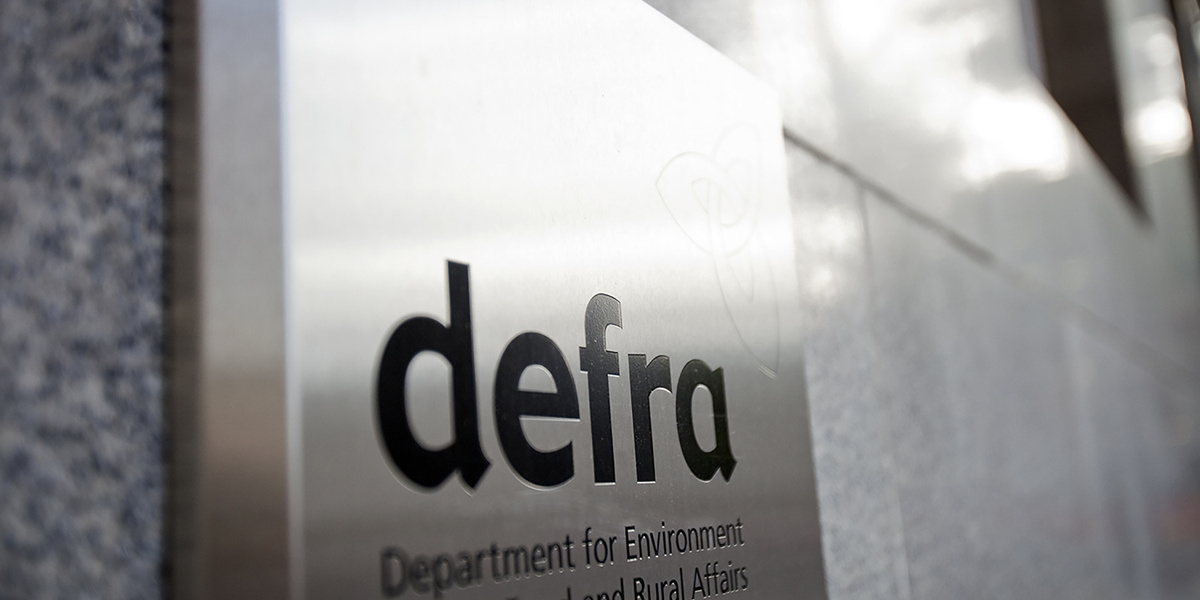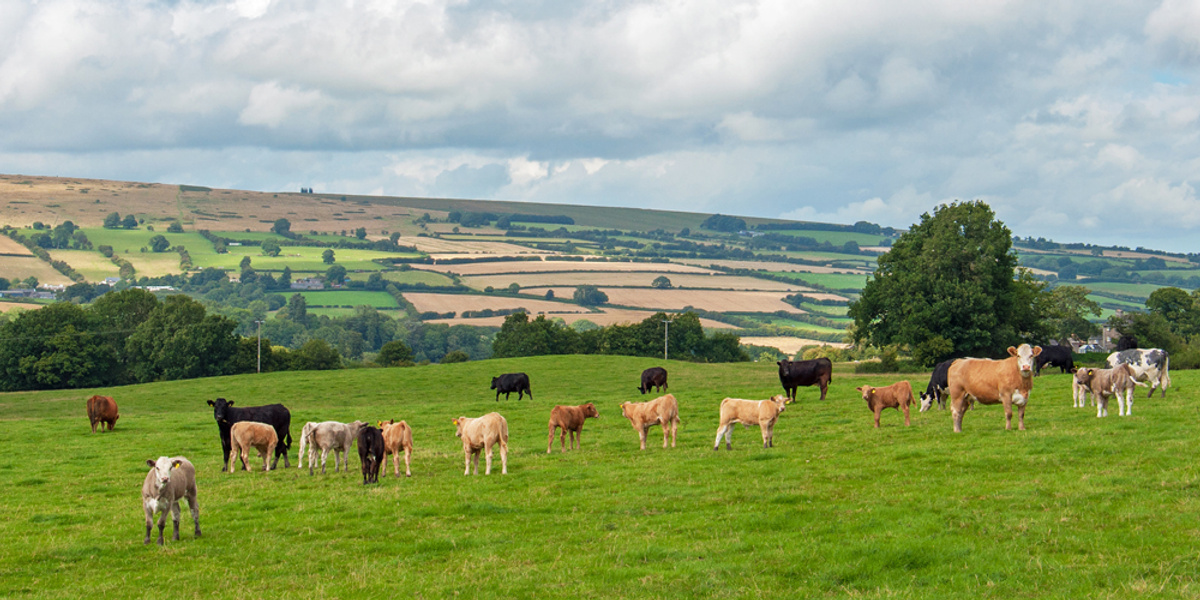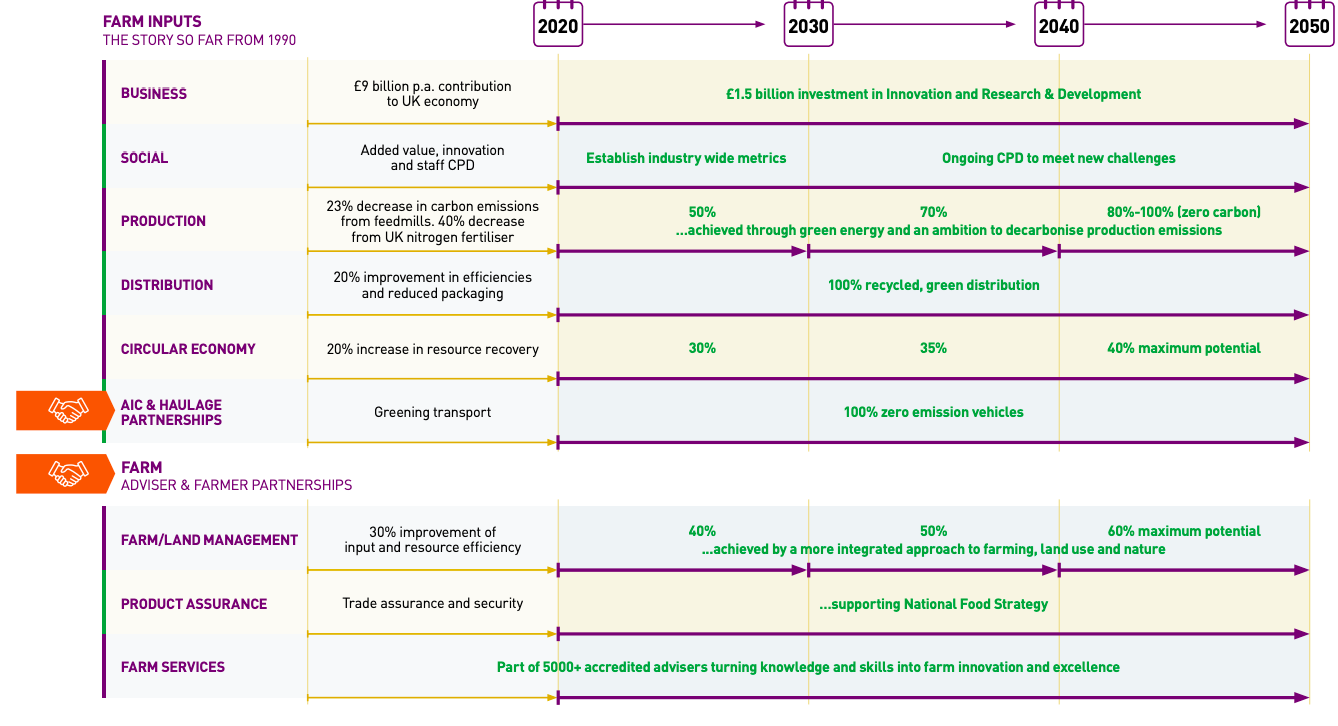
Publish date
19 04 2021
Author

Jane Salter
Jane Salter, Head of Environment Policy, is responsible for management and co-ordination of agriculture and environmental matters for the fertiliser sector, and AIC's Cross Sector environmental matters

Download full version of roadmap image
Introduction
Together we can build a sustainable food chain for the benefit of all
Our Roadmap considers not just our part in the transition to Net Zero Carbon but all aspects of sustainability from our business impacts to our influence on farming and land use. We identify opportunities, set our ambitions and explain where we need help to overcome barriers to progress.
Whether it be to move to more sustainable ways of producing and managing farm inputs, to more efficient distribution, to offering innovative new ways to farm more productively whilst protecting and building our natural resources, we aim to evolve in every way.
We must collectively plan to achieve the business, environmental and social changes necessary to withstand national and global challenges. That is why AIC has developed this first Roadmap to review where we have come from over the past 30 years and what we need to do to make sure we are fit for tomorrow’s world.
So how will this be achieved?
- We are committed to delivering £1.5 billion of farm innovation and R&D over the next 30 years
- The seed industry is investing now in providing the diversity of seeds and variety performance required in the coming decades including plant breeding for traits that can perform in changing climates and for emerging interest in bioproducts
- The fertiliser industry has set its ambitions high to decarbonise its production emission footprints and has a goal to drive Nitrogen Use Efficiency with a focus on soil health and overall nutrient balance on farms
- At animal feed mills, engineers are confident that they can move entirely to green energy with a fair tax relief system
- For crop protection we continue our commitment to integrated pestmanagement and new technology.
- Through our trade assurance schemes, we have the tools and systems to source and trade sustainably
- Processing, storage and distribution of agri-supply materials will continue towards zero emissions while maintaining safe and secure supply chains
- As part of a community of 5000 accredited crop agronomists and feed advisers we will collectively be expanding our skillset to support farmers to make intelligent farm and land management decisions
We call for an open partnership with government, raw material suppliers, farmers, processers and retailers to work with us … and together we can build a sustainable and resilient food chain for the benefit of all.
Detailed commentary
In Animal Feed, Fertiliser, Crop Protection, Seeds and Crop Marketing, our role is to supply UK farmers and growers with our products, services and professional advice. Our part in the food chain is both integral and challenging.
There is an impetus for change, questioning societal values, business resilience and the increased level of awareness of the link between our lives and the natural resources we depend upon.
We have reviewed where we have come from and have aligned our ambitions with UK commitments to the Industrial Strategy, Net Zero carbon, the 25 Year Environment Plan and with UN sustainability goals. Our roadmap covers the journey for AIC members, government and stakeholders alike, helping us to navigate the way ahead, and to develop new skills in order to remove barriers. We commit to turning our roadmap into real outcomes.
The following text provides details of what has been achieved to date and where we intend to reach by 2050 with significant milestones on the way. This is a big picture, the devil will always be in the detail and it is inevitable that the speed of travel will vary sector by sector as businesses adjust and adapt. But all are committed to playing their part in an increasingly sustainable food chain for the benefit of all.
Business
Pre 2020
We contribute 9 billion p.a. to the UK economy and food chain.
Agri-supply businesses, producing and supplying seeds, fertilisers, animal feeds, crop protection and crop marketing, as well as providing farm advice, are essential elements in growing and supplying safe, reliable supplies of food for people in the UK and for export. The products and services we provide to farmers have evolved over the years from a purely product sales based focus to quality and safety considerations encompassing trade assurances, analysis schemes and self-regulation. By extending our remit into responsible raw material sourcing, product stewardship and setting standards for our on-farm advice provision, our businesses have chosen not just to meet, but to surpass existing legal requirements. Our sector currently employs 43,000 people directly and a further 230,000 jobs are supported by our members activities. We contribute £9 billion to the UK economy, and each year, our members invest £50 million in farm applied research. This appetite for innovation in our sector will continue to grow.
Years 2020 – 2050
We project a further £1.5 billion investment in Innovation and Research & Development (over next 30 years)
We are continually adapting and evolving, with new understanding and innovation, to meet the food chains’ expectations from farm to fork. We are committed to ongoing investment in seed variety performance, research spanning from laboratory techniques to field/livestock trials to digital systems and measurement tools. We are aiming for multiple outcomes from our research: to offer well tested practical solutions to help UK farms to adapt to climate change and continue to deliver food, crops for energy and UK goals for environmental goods. PLCs with existing Corporate Social Responsibility requirements and small & medium sized companies alike are reviewing their businesses to ensure that they are on the right track to become sustainable and resilient from their site premises to their up and down stream responsibilities. One lesson we have learnt recently is that each part of AIC has to co-operate far more effectively than it has done in the past to achieve the high-level sustainability goals we have committed to.
Our industry supplying seeds, fertiliser, animal feed, crop protection and crop marketing contribute to these 7 key UN sustainability development goals

Social
Pre 2020
We have invested in our people.
From fertiliser and feed mill operators, to those working in stores and distribution, grain drying, haulage, auditing and supplying on-farm services, we have created a community of dedicated people and provided rewarding careers. Health and safety considerations combined with advanced technical and assurance standards guide our actions.
All company advisers practicing on-farm are qualified professionals, adhering to a formal Code of Professional Conduct. This means that our advisers add value which reaches beyond the technical information associated with the efficient use of farm inputs to include helping farmers with their own business objectives, forward planning and legal compliance.
Across the advisory profession of crop protection and fertiliser agronomists, feed and seed specialists, approximately £40 million is spent annually on training, accreditation and converting this knowledge and experience into farmer focussed solutions.
Independent standards of competence are set by BASIS Registration Ltd: for cropping advice - crop protection (BASIS) and crop nutrition (FACTS) and seed specialists, and by: the Feed Adviser Register (FAR) for animal feeding advice. In the past 30 years, this professional community of on-farm advisers has risen to 5000 working across the UK. These people are an enormous asset to farmers, many of whom may be skilled and/or qualified in their own right, but still need the extra trusted resource to help them run their businesses more effectively.
Many feed advisers are also trained to AMTRA standards for animal health.
Years 2020 – 2050
Continuing Professional Development and shared values will lead change
Our companies are seeking in-house training in sustainability, environmental and energy management. The industry is on a steep new learning curve although, to date, many companies have made progress and are currently working to latest ISO standards and or IEMA training accreditation. We shall be reporting on progress. We realise the foundation for success lies in collective effort and a real sense of shared responsibility.
Both the BASIS and FAR standards of competency for on- farm advice are continually reviewed and this helps develop the highest standards of training syllabuses and continual professional development requirements to which we aspire. The seed sector has also recently been prompted to look into new BASIS training to cover seed treatments enabling effective use of plant protection products.
There is a need to effect change in the business models of integrated supply chains (e.g. in milk, fresh produce etc.) to reflect their need to invest in the wider assets of the farmed landscape. This, combined with the development of the new Environmental Land Management policies, will mean our advice will be extended into new and different areas. Farmers and growers will be considering their role in providing carbon storage and encouraging biodiversity and potential new markets will develop to achieve net zero carbon and biodiversity net gain of 10%.
Our farm advisers, who are already familiar with advice linked to soil, water and air quality, and greenhouse gas emissions, are likely to be increasingly required to specialise in offering farmers more integrated advice packages. Not only that but they will be required to help farmers with their longer-term farm planning including preparing for the effects of climate change, such as new diseases and extreme weather.
Our advisers will further improve on the delivery of high quality integrated nutrient management plans, farm nutrient budgets, and integrated pest management plans. However, we also need farmers to demand/pull through what we can offer to incentivise progress. Policies which will drive a greater level of professionalism on-farm are required. Farm inputs and associated professional advice have to be valued and used even more effectively than they are today.
Measuring the changes we make & agreeing the metrics
Self-auditing within AIC businesses (on products or in management systems) with a view to verification, is necessary to achieve transparency in the market-place and to help government monitor success and or create border adjustment mechanisms. To date, there are no mechanisms for carbon border adjustments on agricultural goods.
Industry assurance schemes, farmer surveys, industry statistics and farm audits/calculators which are used to track farming practices are all available. However, terminology, variable data quality and fragmented information make assessing progress against common standards of measurement challenging.
The key is for the metrics of sustainability to encourage the right direction of travel and for them to be understood by all in the food chain. We are fully committed, in conjunction with our farming partners and with the use of government statistics, to delivering clearer terms of measurement and to inform decision making in the market place.
Production
Pre 2020
Since 1990 we have reduced carbon emissions in the production processes of primary nitrogen fertilisers by 40% and, from 2020, at feed mills producing compound feeds, by 23%.
Fertiliser production
While nitrogen (a building block of protein) is as essential to life as air and water, its production for fertiliser is energy intensive and releases the greenhouse gas, nitrous oxide. However, UK manufacture of nitrogen based (ammonium nitrate) fertiliser from two facilities (at Ince and Billingham) employ the latest available technologies making it possible to cut emissions per tonne of nitrogen fertiliser by 40%. Other EU (& some non EU) sites, importing into the UK, have made similar investments.;
Whilst the nitrogen in fertilisers bear the majority of the carbon footprint of fertilisers. Other elements originating from sourcing mined phosphorus and potassium carry footprints also. The fertiliser industry is able to calculate these for farmer or supply chain requirements. Fertilisers Europe offers a footprint calculator on-line, as does The Carbon Trust. The key is verification of the data standardised to PAS 2050 or equivalent ISO standard, and transparency around what is included in the calculation.
Compound animal feed production
The carbon emissions associated with the production of compound animal feed per tonne are 23% lower than in 2000, following the introduction of Climate Change Agreements and associated relative energy efficiencies achieved. These are industry data validated by the Environment Agency.
Of the total Product Environmental Footprint (PEF category rules) of animal feeds, at least 85% lies in producing the raw materials, hence the importance of raw material sources bearing in mind any land use change associated with production in the last 20 years (see later section on product assurance: our upstream and downstream responsibilities).
In 2019 Global Metrics for Sustainable Feed were published helping to formulate feeds/source raw material supplies based on environmental credentials. PEF software is in development.
Plant breeding and seed production
The plant breeding world has been successful to date in securing the availability of seed varieties for a wide range of end use/market requirements – from food crops to grass and forages and more recently for energy crops. Crop variety selection is driven by criteria such as disease resistance, crop yield and overall performance. Many crop varieties have genetic potential not currently realised in practice which means there is scope to fill the yield gaps. This can be achieved by overcoming limiting factors such as poor soil health for example, and improving agronomy, as well as working towards Fertiliser Industry goals to improve nutrient management efficiencies on farms.
Years 2020 – 2050
We are aiming to reduce production related carbon emissions of fertilisers and animal feeds by at least 80%-100%, which can be achieved through a combination of a new emissions trading policy, technologies, carbon capture and renewable energy
The Fertilizers Europe’s long-term vision to 2030 is for a combination of new/alternative climate friendly ammonia production methods and use of industrial by-products alongside Carbon Capture, Storage and Utilisation: the latter being the only viable option for UK facilities until low carbon manufacture Auto Thermal Reforming can also be introduced.
A suitable Emissions Trading Scheme (ETS) and carbon border adjustment mechanism is vital to prevent carbon leakage and enable UK and EU primary nitrogen production to continue to compete internationally with facilities which are not decarbonising at the same rate. In tandem, significant government finance is needed to bring forward carbon capture and storage facilities to continue the industry’s advancement to decarbonisation. Once the carbon is captured UK utilisation of that carbon is then made feasible.
It is important that farmers and growers have the right fertiliser formulations and quality products for their soils, systems and cropping requirements. Matching the right product to the right situation is key to overall emissions reduction.
Looking ahead, feed mill engineers are confident that a combination of green energy solutions will be employed to decarbonise the energy consumption at feed mills. They foresee a zero carbon goal can be achieved through site energy generation (CHP, wind, solar, hydro, bioenergy etc) and access to green energy through the national grid.
However, success depends on a supportive UK energy policy, enabled by schemes such as Climate Change Agreements or an equivalent fair taxation system.
The relationship between feed formulation and quality and emissions reduction potential on-farm is key to achieving the lowest possible environmental footprint.
New seed traits and markets
Plant breeding techniques are continually advancing. There is evidence that UK crop performance is being affected by changing and more extreme weather patterns. New crops and varieties which can perform in changing climatic conditions and with new pest and disease threats will be needed.
The industry is continually reviewing seed treatments for more effective and targeted use of plant protection products and is now looking ahead to the role of micronutrition to enhance seed performance, and to emerging markets for plant-based materials.
Delivering on the Roadmap Ambitions
Distribution
Pre 2020
We have decreased fuel consumption by over 13% and have reduced the use of packaging materials significantly
Our distribution network involves the movement of grain, fertiliser, seed, crop protection products and animal feed to and from ports, stores and farms. These movements are achieved with a combination of in-house and contracted haulage fleets.
Restructuring and rationalisation of the sector has been significant to date, with a 100 fold reduction in the number of businesses since 1990. Business models are continually reviewed to deliver economies of scale and to engineer out inefficiencies and costs.
Industry data (from AIC companies) would suggest that the combination of rationalisation and improved logistical planning, from store location to route planning, has realised a reduction in fuel usage in the region of 13% and overall energy savings by 20%.
Since 1990, evolution of supply logistics away from 50kg bags to 600kg and 1000kg bags for solid form fertilisers and for seeds has significantly reduced packaging (by circa 70%) and energy use in packaging by an estimated 90%. The majority of compound animal feed is moved in bulk - and remaining packaging used has reduced from 30% to 3% since 1990.
The development of lower dose and single isomer plant protection product formulations has reduced quantities distributed and therefore the pack sizes and the amount of packaging required.
90% of all packaging for agri-supply packaging is recyclable, and farm collection services are generally reported as good with materials making high quality recyclate. (Scotland is less well served). The problem is that the packaging collected from farms is not recycled in the UK. This needs to change.
Grain/combinable crop drying has so far fallen outside the scope of policy intervention. However, the crop marketing sector is primed to look into what is possible in terms of green energy alternatives and to make its contribution.
Years 2020 – 2050
Making changes to bulk supply / 100% of packaging material recycled in the UK
Any remaining options to move to bulk supply or to simplify both the design of small and large volume bags/containers will be explored. Our members are acutely aware that they need to continue to find ways to improve their position both in terms of the products they package and the raw materials received in packaging (less than 2% of total packaging used).
Several members are piloting a UK wide waste tracking system, which should help compliant companies to demonstrate their recycling commitments.
The proposed Plastic Tax in 2022, the proceeds of which are intended to be used to boost UK recycling capacity, and the new regulatory regime for packaging are set to drive demand for suitable recycled material for incorporating into new packaging materials. All of our member companies will be required to test any new specifications with the help of their packaging suppliers to be sure they remain fit for purpose in terms of physical and chemical integrity. Projects are underway to look at innovative new packaging solutions.
Early conversations with those involved in crop drying indicate that a transition towards renewable liquid fuel, deliverable by tankers, to drying facilities would be logistically and economically most appropriate. We will look to secure supplies of ethanol, biodiesel, biogas, or green hydrogen and how to overcome any barriers to supply, considering the short window for fuel demand.
Circular Economy
Pre 2020
We estimate the industry has achieved a 20% improvement in nutrient recovery over recent decades
Currently in the UK, over 650,000 tonnes of former foodstuffs are processed and/or sent direct to farm annually creating a valuable source of livestock feed worth £110 million, removing this tonnage of food from the waste hierarchy.
Globally, based on UN data, 86% of all the components in animal feeds, are derived from materials unsuitable for human consumption. This proportion includes grass and forages, crops which don’t meet food grades and co- products from the food and bio-fuel processing sectors such as wheat feed, rice bran and distillers dark grains. This situation is typical of the UK but we can still make more use of co-products in animal feeds.
On-farm, approximately half of the nitrogen fertiliser required to fertilise crops (including grass and forage) for food and animal feed comes from the nitrogen recycled from animal manures or safely recovered sewage sludge. There is potential to recover even more manure nutrients (nitrogen, phosphorus, potassium etc) using techniques for manure processing – such as those developed and used in the Netherlands.
Years 2020 – 2050
Continuing to close the nutrient loop in order to reach a maximum potential (and safe) recovery rate
We are committed to a sustainable protein strategy for the UK considering the ideal proportions of feed protein imported and home-produced. Currently, 47% of feed materials that are incorporated into compound animal feeds are imported, with 53% home produced. We will also increase the rates of incorporation of former foodstuffs and co-products of food and bio-fuel processing into animal feeds to maximum possible levels. This will involve full evaluation of options based on animal nutritional requirements, material availability, feed safety and technical limitations.
We will establish a UK protein balance sheet for animal feeds and rank feed materials/crops based on sustainability criteria to support the making of trading decisions.
More effective recovery of crop nutrients from farm available organic sources (manures, digestates etc) can further lower the amount of extra fertiliser required to meet crop needs, in the geographies and farming systems where this is possible. It is recognised there is a balance to be found between resource recovery, productivity and efficiency. Future policies will be needed to drive optimal nutrient management. What this ideal looks like will vary by region, and sources of nutrient available.
There are also opportunities for recovery of nutrients from urban waste water and to enhance the fertility of organic materials with manufactured fertiliser to better match crop requirements.
All organic materials however must be stored, handled and applied to land according to Best Available Techniques/ Protocols to avoid the risk of emissions to water and air increasing not decreasing as a result.
The occurrence of microplastics in waste water biosolids does also need to be considered against the benefits of land spreading.
From a seed production perspective novel ideas are now being trialled and promoted such as seed varieties for green manures, feedstock crops for anaerobic digestion (for optimum biogas production) and to produce grass seed bags for home saved grain and animal feed. This investment is indicative of the commitment to finding circular economy solutions.
AIC & Haulage Partnerships
Pre 2020
Fuel and transport efficiencies
This has been a policy driven area in so far as haulage fleets (in-house or contracted) must have Euro 6 engines, replacing 4 and 5s, to reduce emissions and vehicles have to be regularly maintained. Most haulage operators use transport management telematics which ensure that drivers go to and from their destinations in the most efficient manner.
Tyres are designed to be fuel efficient.
Members have started to move to electric/hydrogen company cars.
Around 100 of our member companies are bound into energy reporting schemes. Those falling in scope of the regulatory Energy Savings Opportunities Scheme and Simplified Energy and Carbon Reporting are required to report on their transport fuel use. These schemes are designed to help companies to reduce their energy consumption.
Years 2020 – 2050
Achieving 100% zero emission vehicles
The UK Government Road to Zero Strategy will pressurise the transport sector, which we depend on, and our own haulage fleet to achieving the end goal. We are also looking into alternatives to road transport – by sea or rail for long distance carriage of raw materials/end products.
Government’s long-term goal is the development and deployment of zero emission HGVs. While the pathway to achieving this is not as clear as for cars and vans, technologies are starting to emerge even for the largest vehicles. A new industry-wide voluntary target for reducing HGV greenhouse gas emissions by 15% by 2025, from 2015 levels has been agreed.
Zero emission technologies are at different stages of development for different segments of the HGV sector, with solutions more advanced for zero emission smaller, shorter-haul HGVs than for larger, long-haul HGVs. But zero emission technologies exist and are technically proven for all types of HGVs and operations.
Electrification of large and long-haul HGVs is possible. Vehicle manufacturers have produced large electric HGVs and there have been several successful trials of dynamic charging technologies for HGVs internationally. Hydrogen is also a feasible zero emission solution for large, long- haul HGVs.
Farm/land management
Pre 2020
We have seen a 30% improvement in overall farm input efficiency
A combination of regulatory push, awareness raising, voluntary activities, new technologies and the pulling together of advisory effort is making a difference to the way inputs are managed on farm. The link between various Catchment Sensitive Farming initiatives and our industry advisers has proven successful as has the leadership provided by LEAF Integrated Farming and Integrated Land Management.
From Defra statistics 2016 we know that 89% of the UK’s farmed area is managed in conjunction with expert advice from at least one professional source.
Data from BSFP show that the use of mineral phosphate fertilisers use has fallen by 55% and nitrogen use by 39% in the last 30 years. Correspondingly, overall Crop Nitrogen Use Efficiencies are up by 27%. This has been as a result of improving fertiliser practice, and new seed varieties with higher yield potentials.
However, PAAG data show sub-optimum soil pH, and soil phosphorus, potassium, sulphur and micro-nutrient availability are still limiting both crop productivity and environmental performance. The focus on nitrogen as a driver of yield must now be pulled back in favour of taking a holistic look at all the factors that drive yield and emissions reduction.
In the past 30 years, continuous progress has been made in plant protection product formulation and safety and application practices with tools such as Integrated Pest Management (IPM) planning, CPD in application (NRoSO training) forecasting of disease thresholds for optimum timing and rates; record keeping and phasing out of more persistent products based on latest detection methods and scientific review. The effectiveness of a combination of measures is borne out in Catchment Sensitive Farming monitoring reports.
Feed Industry data show reduced waste in animal diets
Between 1999 and 2014 the inclusion of nitrogen has reduced by 5.6% and phosphorus by 22.2% - in total across all animal species. These levels have been maintained.
Years 2020 – 2050
Making changes to farm businesses so they drive forward the transition to a sustainable, productive, resilient agricultural/horticultural sector
The right balance between push and pull policies is required to maintain results in reducing nitrogen and pesticide losses and to deliver a higher level of success where concentrations in sensitive catchments remain a concern. Lessons learned about policy design and voluntary initiatives can be extended to target phosphate levels in water, and emissions of ammonia to the benefit of air quality and biodiversity.
It is important to have common frameworks and principles of understanding to guide progress and that broad consensus on the direction of travel exists. We will focus on actively achieving: sustainable use of soil - linking productivity to soil health and land capability, seed security and diversity, lowering farm environmental footprints, and offsetting farm carbon emissions (nitrous oxide and methane) with carbon storage in natural habitat alongside biodiversity gain and the bioeconomy.
We believe it is vital for the joint Industry, Government Catchment Sensitive Farming advice programmes to be continued and strengthened to deliver even more basic and advanced changes in farm practice and to monitor effectiveness. Also to build on the existing direction of travel outlined in technical guidance such as:
- LEAF Sustainable Farming Review
- AHDB hub on soils & Crop Nutrient Management guidance
- FAO Code: sustainable use of fertilisers
- Voluntary initiative – promoting responsible pesticide use
- Greenhouse Gas Action Plan & Championing the Farmed Environment
- Achieving Net Zero, NFU
- New opportunities in brokered Biodiversity markets by https://www.environmentbank.com/ etc. using Defra Biodiversity metric 2.0 and BS2020:2013
- Benefits of on-farm tree planting in building carbon sinks and benefits to farm business and the wider environment
And being able to benchmark current practices and measure change will be aided by tools such as:
- Cool Farm Tool
- developed by a supply chain consortium, including water and biodiversity
- Farm Carbon Toolkit – farmer lead
- Agrecalc – developed by SRUC
- Farm benchmarking services – Northern Ireland
- AHDB’s Farmbench/ strategy business planning tools – being developed for levy payers
We are committed to helping farmers with benchmarking Crop Nitrogen Use Efficiency and Feed Conversion Rates, to setting targets for improvements and to creating whole farm nutrient budgets.
The important thing is to choose a reputable farm tool and stick with it to measure relative progress.
With attention to detail, further efficiency savings on inputs can be gained. Science has proved that soil condition and animal health and welfare are key to meeting both production and environmental targets whilst delivering net zero. However, the potential to significantly build the soil carbon store of a farmed soil may be limited and will mainly be determined by the cropping system and land use change. This is not to be confused with the value of organic matter to soil structure, biological activity, and more efficient uptake of all nutrients which can significantly reduce nitrous oxide emissions from soil.
Integrated Soil and Nutrient Management Plans and Integrated Pest Management Plans may seem an over- simplified solution but they are not simple to deliver and require skilled and conscientious implementation to achieve the right outcomes for productivity and for the environment.
The adoption of innovative technologies and digital measurement tools aiding greater precision and accuracy in farm practice will be key to making stepped changes alongside breakthroughs in crop genetics and advances in animal breeding. Many novel tools still require refinement before they can be relied upon. Continued government support will be needed to overcome barriers to adoption.
All newly available and established techniques will be needed to support an increasingly sustainable UK food/protein production base, of which novel proteins play a part.
Analysis by the Committee on Climate Change (2020) indicates the opportunity for low carbon/efficient farming and off-setting farm production emissions with building carbon stores in the non-farmed habitat through hedges and trees, alongside on-farm energy generation (and peat restoration & forestry). It is estimated that a combination of approaches can feasibly reduce overall rural land use emissions by 2/3rd by 2050. The ideal mix will vary by region and the varying opportunities for change governed by the farming system. A local/regional approach based on land capability mapping is required to deliver all round success.
AIC, CLA and NFU and others will lead a partnership to design the best pathways for rapid action. We will address the role for seed, fertiliser, feed and crop and animal health in delivering net zero and biodiversity while also reducing the export of UK emissions.
Product assurance
Pre 2020:
Product assurance, safety and security
Our Trade Assurance standards for feed safety, use of seed treatments and for fertiliser security are recognised nationally and internationally and represent a huge step forwards in self-regulation. They really do have a key role in minimising the risk of food scares and national security risks.
This work is an unseen part of the food supply chain but is a vital component of a safe and secure food supply chain. It is important that this work is recognised in a future National Food Strategy post our departure from the EU.
AIC’s assurance schemes are continually reviewed to ensure that they remain robust and fit for purpose in these changing times.
We are fully engaged with a number of UK initiatives on responsible sourcing of feed materials such as soya and have recently introduced an AIC Responsible Palm Oil Credit scheme to facilitate our goal for all AIC members to use sustainable palm oil in animal feeds.
Years 2020 – 2050
…supporting national food strategy
We clearly have a strategic role in meeting the aims of a National Food Strategy to deliver safe, healthy, affordable food through a supply chain which is robust in the face of future ‘shocks’. This must be achieved whilst restoring and enhancing the environment.
To achieve this, we will be developing our assurance services with government and members, building on the rising interest in conducting company impact assessments and sustainability reporting.
Improvements are being continually made in feed raw material sourcing. We remain engaged with responsible sourcing initiatives and are an integral part of a collective industry response to the challenges from policy makers and society demanding supply chains reduce the risk of deforestation, with the long term aim of deforestation free sourcing. The ambition is to deliver on these criteria urgently without compromising the integrity of current supplies.
We will continue to deliver and extend our sustainable sourcing commitments with verification through our own and joint schemes and also dig deeper to verify supply chains are free from modern slavery.
Phosphorus resources are finite; future food security and nutrient supply in the UK depends on mined reserves being imported and phosphorus recycling being continuously increased (closing the loop as far as practical). This can be made possible by increasing the availability of recycled bio-available phosphorus e.g. from human sewage into high quality/safe to use materials.
We are involved in an academic review of phosphorus balance in the food chain to be best advised of the need for future action. Potassium supplies are plentiful by comparison as now is sulphur.
Farm services
Across the industry, 5000 advisers spend £40 million annually on converting R&D and latest knowledge into farm advice, innovations and tools.
AIC has conducted two studies: on the Value of Advice and more recently, the Status of Agricultural Knowledge.
The studies revealed the important scale and scope of the professional advisory community in supporting farmers and growers to meet the competing pressures upon them. In tandem we welcome the upskilling of farmers in farm/ integrated land management planning making them the drivers of the bespoke advice and technical support they require.
The 5000+ professionals on the BASIS and FAR professional registers (all affiliations not just AIC and including farmers themselves) have a sound foundation of knowledge to deliver the twin-pillars of sustainable food production and environmental goods. In future, many will be able to offer wider biodiversity and land management solutions to support farmers to produce their future farm and land management plans. In all we estimate these advisers will have around 44,000 conversations on UK farms every week.
Our ambition is to work with our farm and food industry partners on processes for evaluating new innovations and their practical applications on farm (See Vera verification system) for testing and verifying environmental technologies.
A roadmap for a sustainable food chain.
Together with our partners in the food chain we want to build a more resilient future and we have committed to a Sustainability Roadmap that will deliver.




